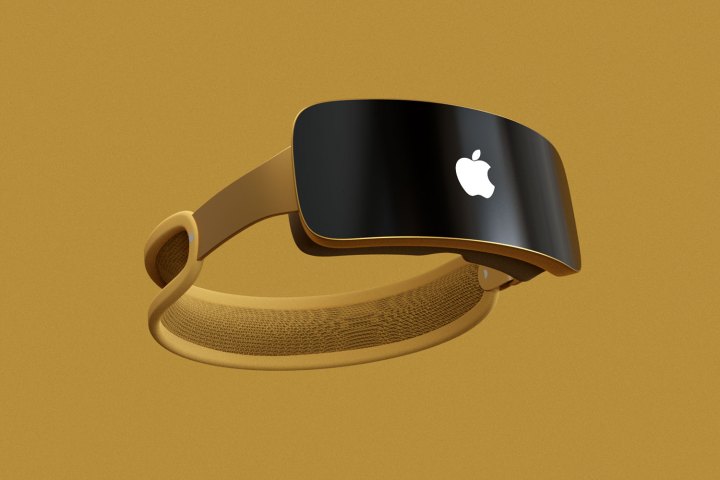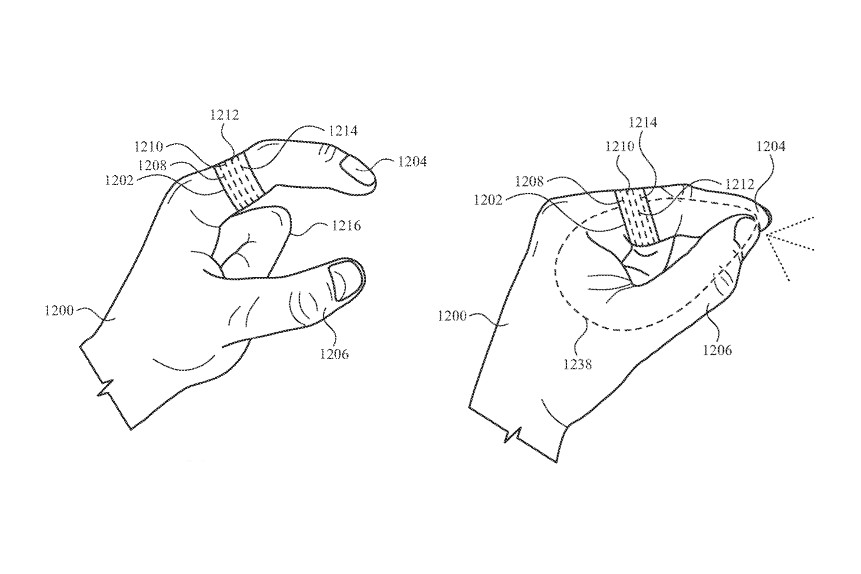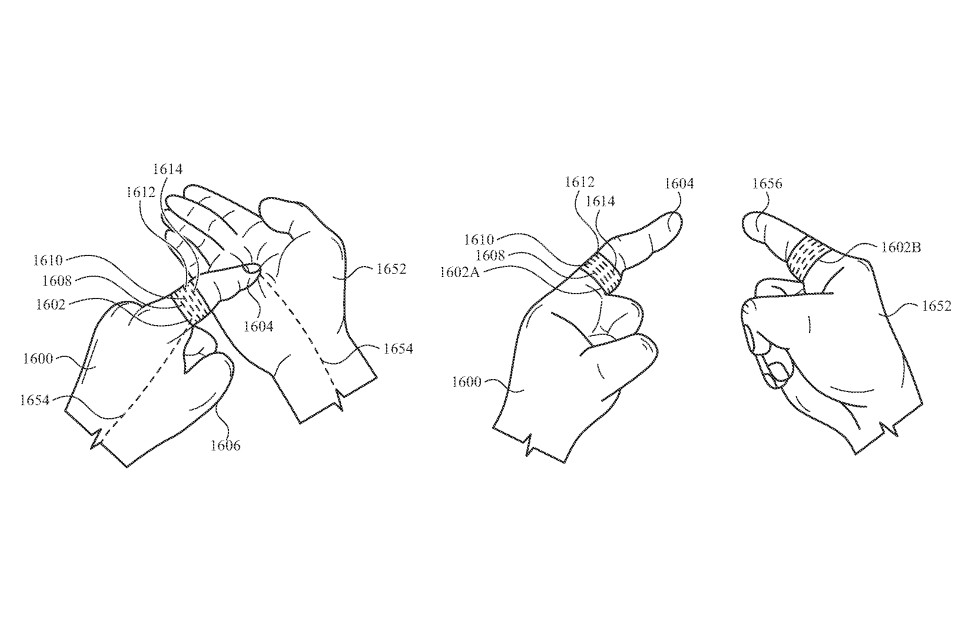Apple’s secret mixed-reality headset — dubbed Reality Pro — is due to launch imminently, but the way you’ll use the device is something of a mystery. Sure, rumors have pointed to some form of gesture control, but that’s a pretty vague description. Fortunately, we might now have a better idea of how it will work.
That’s because Apple has just been granted a patent outlining how you might be able to use a special ring to control objects while using the Reality Pro headset. The idea is that, with this ring on your finger, you’ll be able to perform various gestures that will let you open apps, scroll webpages, and more.
The patent explains that Apple is working on gestures specifically involving skin-to-skin contact. That might mean tapping the fingers of one hand onto the palm of another. Or it could mean pinching the fingers of one hand together. That could let the headset detect a wide range of movements and gestures.
Apple’s idea of using a ring to enable this gesture control system is interesting because we haven’t seen this sort of thing before. Other patents have covered things like using an Apple Pencil to draw in augmented reality, or popping thimble-like devices onto your fingertips to enable hand-tracking.
A small handful of leakers and analysts have hinted that the Reality Pro will use some form of gesture system, with journalist Mark Gurman suggesting you’ll be able to look at app icons on-screen and then pinch your fingers to open the app, for example. But few have suggested the ring device outlined in Apple’s patent.
Other secret ideas

This isn’t the first hand-tracking idea Apple has been toying with for its headset. We’ve previously seen an Apple patent that outlined how the headset could use two Apple Watches to enable its gesture controls (and this latest patent also explores that idea). But that seems a pretty clunky — not to mention expensive — way of going about things.
Using a ring would be a much more streamlined way of granting you the ability to use gesture controls, and wouldn’t require you to fork out hundreds of dollars for two expensive watches. As well as that, it would probably be less likely to get damaged in the process of using gesture controls than two bulky Apple Watches, so that’s another plus.
Since this is just a patent, it’s best to treat it with a degree of skepticism. In the end, Apple might just be exploring ideas and could use a totally different method for gesture control — if it includes it with the Reality Pro at all.
Ultimately, we only have a few weeks to find out how the Reality Pro’s gesture control system will work, as Apple is widely expected to launch the headset at its Worldwide Developers Conference (WWDC) on June 5. Until then, we’re left to read the patent tea leaves for clues.
Editors' Recommendations
- This new VR headset beats the Vision Pro in one key way and is half the price
- Vision Pro 2: everything we expect from the future of Apple’s headsets
- Apple’s Vision Pro could be coming to these countries next
- The gloves are off as The Zuck lays into Apple’s Vision Pro
- Vision Pro App Store reaches early milestone, Apple reveals





